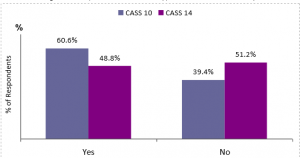

Here’s the thing about payphones: if by error you have left your mobile phone at home, making a call will be difficult unless you borrow someone else’s phone. That’s the trade-off as mobile phones replace payphones. Payphones can be expensive to maintain and whenever they are used with coins they require regular collection, and for that reason they may attract vandals. But being payphones, they attract service providers. In Singapore a Services-Based Operator licence is required, and a quick Google search pulls up a reference to there being eleven SBO providers of payphones by 2012 in Singapore, including the carriers SingTel and StarHub.[1]
Shopping malls seem to be occasional providers of payphones, and a requirement of SingTel and StarHub is they provide payphones in housing estates. The MRT subway stations are another likely location. But are they truly needed?
An IDA consumer awareness survey in 2014 found that over 50% of residents no longer thought payphones were necessary, compared with over 60% who did so in 2010.[2]


What brought this to mind was reading about New York City putting out to tender the replacement of all of its public telephone boxes by Wi-Fi hotspots.[4] A consortium called CityBridge, which includes Google-subsidiary Sidewalks Labs, Qualcomm and Internet telephone company Vonage, won the contract to build project LinkNYC. They plan to spend USD200 million constructing a network of 7,500 hotspots with speeds of up to one gigabit across NYC within 8 years. The project will be supported by a metropolitan optical fibre network to replace the existing copper lines. Each kiosk will include a hands-free phone, Android tablet for browsing and two digital panels to screen advertisements, which will be the source of revenue. Anyone lucky enough to live within a short distance of one of the 9’ towers will be able to dispense with their subscriptions to the local telecom companies, AT&T, T-Mobile US, and Verizon and enjoy the free hotspot. While LinkNYC is not the first example of transforming payphone booths into hotspots, it is by far the most comprehensive.
The business model is more interesting than the engineering-technology model. At the end of the 12-year contract, CityBridge will pay to NYC USD 500 million or half its revenue, whichever is the greater. Apparently none of the three telecom companies have raised objections, despite the obvious competitive implications. This can only be explained by the fact that the business models of telecom companies are fast changing. Although monthly subscriptions for network access will remain a major source of income for these utilities, especially wireless network access, there are now many new sources of revenues. On the consumer side they range from broadband services to the home to streamed services to wireless devices, to advertisement-related and media-related lines-of-business, to bundled services and revenue sharing with OTT service providers. In fact, the more easily and cheaply consumers can be online with their smart devices, the more of a market there is for websites, such as e-commerce sites and music streaming sites, in which the telecom companies themselves have a growing interest. As local access partners, they are well positioned to compete.
On the enterprise side, managed network services and increasingly cloud-based services are moving centre stage. These shifts are leaving room for social media and communications companies to enter their space, Google, Facebook, Vonage, and many others. By mid-2016 CityBridge aims to have the first 500 kiosks up and running. One advantage to the telecom companies is there will be more Wi-Fi available to reduce the traffic loads on their networks. By contrast, the new entrants can, at a price, offload some of their traffic to the carrier networks.
But, and here is the thing, with free Wi-Fi there are no usage charges, there is a freephone service and not a payphone service. Of course ownership of a mobile phone (the means of access) is not free, but revenues from usage become far less important. Like the flat-rate bundled services of carriers, the freedom to use telecommunications will be paid for by other means. LinkNYC is ringing in the changes.
[1] https://news.asiaone.com/News/Latest+News/Singapore/Story/A1Story20120507-344363.html. The IDA website provides a search function, but you first need to know the name of the licensee which isn’t much help.
[2] https://www.ida.gov.sg/~/media/Files/Infocomm%20Landscape/Facts%20and%20Figures/SurveyReport/2014/IDA%20CASS%202014.pdf
[3] https://www2.deloitte.com/uk/en/pages/technology-media-and-telecommunications/articles/mobile-consumer-survey.html
[4] www.bloomberg.com/news/articles/2016-01-05/new-york-city-unveils-its-first-super-fast-wifi-kiosks